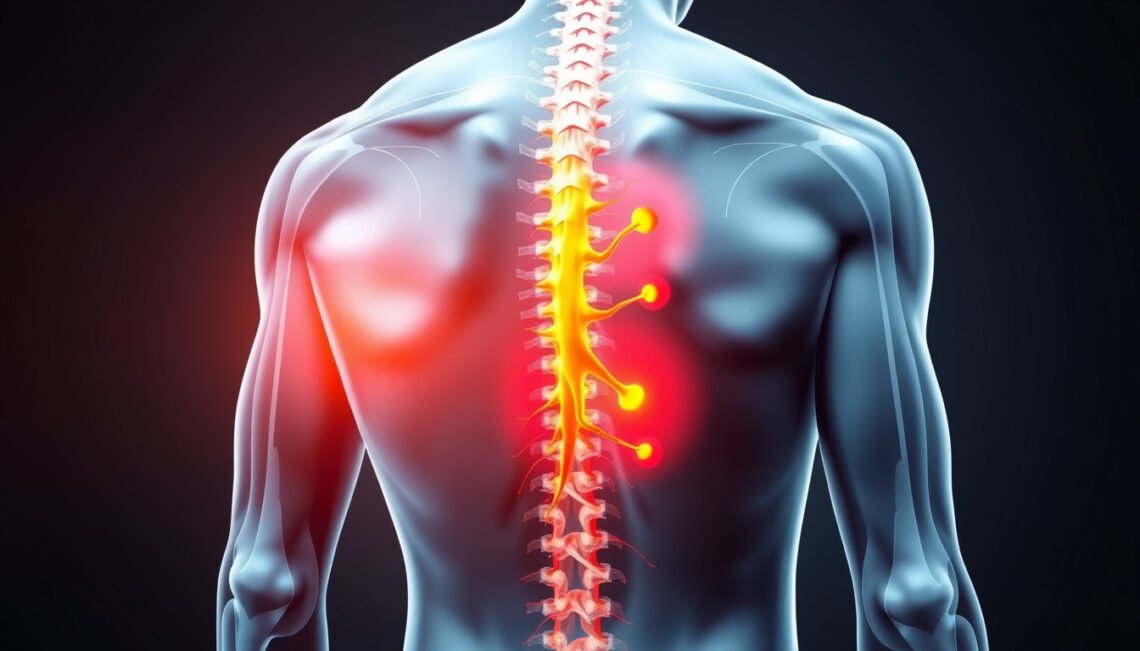Sciatica nerve root pain is a common condition that affects millions of people worldwide. It occurs when the sciatic nerve, the largest nerve in the body, becomes irritated or compressed at its root, leading to pain that radiates along the lower back, buttocks, and legs. Understanding the intricacies of sciatica nerve root pain is essential for identifying its causes, recognizing symptoms early, and exploring effective treatments that can provide relief and improve quality of life.
What Is Sciatica Nerve Root Pain?
The sciatic nerve originates from several nerve roots in the lower spine, specifically from the lumbar and sacral regions (L4 to S3). Sciatica nerve root pain arises when one or more of these nerve roots are compressed or inflamed. This irritation disrupts normal nerve function, resulting in pain, numbness, tingling, or weakness that follows the path of the sciatic nerve.
Unlike general back pain, sciatica nerve root pain typically has a distinct pattern, radiating down one leg and affecting specific areas depending on which nerve root is involved.
Causes of Sciatica Nerve Root Pain
There are several potential causes of sciatica nerve root pain, many related to conditions affecting the spinal column and nerves:
- Herniated or Bulging Disc: One of the most common causes, a herniated disc occurs when the soft inner gel of a spinal disc protrudes through its tough exterior, pressing on a nearby nerve root.
- Spinal Stenosis: This condition involves narrowing of the spinal canal, which can compress nerve roots including those of the sciatic nerve.
- Degenerative Disc Disease: As discs age or wear down, they can contribute to nerve root irritation.
- Spondylolisthesis: A condition where one vertebra slips forward over another, potentially compressing nerve roots.
- Piriformis Syndrome: This occurs when the piriformis muscle in the buttocks irritates or compresses the sciatic nerve.
- Trauma or Injury: Fractures or other injuries to the lower spine can directly affect the sciatic nerve roots.
- Tumors or Infections: Though rare, abnormal growths or infections near the spine can place pressure on nerve roots.
Symptoms of Sciatica Nerve Root Pain
The symptoms of sciatica nerve root pain vary depending on the severity and location of nerve root compression but commonly include:
- Sharp or burning pain that radiates from the lower back or buttocks down the leg, often reaching the foot.
- Numbness or tingling sensations, commonly described as "pins and needles."
- Muscle weakness in the affected leg or foot.
- Difficulty moving or controlling the leg due to discomfort.
- Worsening pain when sitting, standing for long periods, or performing specific movements like bending or twisting.
It’s important to note that sciatica nerve root pain usually affects only one side of the body.
Diagnosing Sciatica Nerve Root Pain
Diagnosis begins with a thorough medical history and physical examination. Doctors will assess symptoms, reflexes, muscle strength, and sensation patterns to determine the likely affected nerve root.
Imaging studies such as MRI or CT scans can provide detailed views of the spine to identify disc herniation, spinal stenosis, or other anatomical causes of nerve root compression. Electromyography (EMG) tests may also be used to evaluate nerve function.

Effective Treatments for Sciatica Nerve Root Pain
Treatment depends on the underlying cause and severity of symptoms but generally falls into one or more of the following categories:
1. Conservative Management
Most cases of sciatica nerve root pain improve with non-surgical approaches:
- Physical Therapy: Targeted exercises strengthen the muscles supporting the spine and improve flexibility to relieve nerve pressure.
- Medications: Anti-inflammatory drugs (NSAIDs), muscle relaxants, or nerve pain medications can reduce inflammation and discomfort.
- Heat and Cold Therapy: Applying heat or ice packs can help ease muscle spasms and reduce pain.
- Activity Modification: Avoiding activities that exacerbate symptoms and incorporating ergonomic adjustments.
2. Injections and Minimally Invasive Procedures
In cases where pain persists, corticosteroid injections near the nerve root can decrease inflammation and provide targeted relief. Some patients benefit from nerve blocks that interrupt pain signals.
3. Surgical Options
Surgery may be necessary if conservative treatments fail or if significant nerve compression causes severe symptoms like weakness or loss of bladder control. Common surgeries include:
- Microdiscectomy: Removal of a herniated disc portion compressing the nerve root.
- Laminectomy: Removal of spinal bone to relieve pressure in cases of stenosis.
Surgical interventions generally have high success rates but require careful evaluation of risks and benefits.
Lifestyle and Home Remedies to Support Recovery
In addition to medical treatments, lifestyle adjustments can play a vital role in managing and preventing sciatica nerve root pain:
- Maintain a healthy weight to reduce pressure on the spine.
- Practice good posture during sitting, standing, and lifting.
- Engage regularly in low-impact exercises like walking, swimming, or yoga.
- Use supportive seating with lumbar support.
When to Seek Medical Help
While mild sciatica nerve root pain may improve on its own, immediate medical attention is needed if you experience:
- Severe, unrelenting pain.
- Progressive muscle weakness or numbness.
- Loss of bladder or bowel control.
- Difficulty standing or walking.
Early intervention is crucial to prevent permanent nerve damage.
Frequently Asked Questions (FAQ)
Q1: What exactly is sciatica nerve root pain, and how is it different from general sciatica?
A1: Sciatica nerve root pain specifically refers to pain caused by irritation or compression at the origin (root) of the sciatic nerve in the spine, whereas general sciatica may describe any pain along the sciatic nerve path. Root involvement often means more precise symptoms correlating with nerve root distribution.
Q2: How long does sciatica nerve root pain typically last?
A2: The duration varies depending on cause and treatment. Many cases improve within 4 to 6 weeks with conservative care, but chronic nerve root compression may require longer management or surgery.
Q3: Can sciatica nerve root pain be prevented?
A3: While not all causes are preventable, maintaining spinal health through good posture, exercise, and avoiding heavy lifting can reduce risk.
Authoritative Source
For further detailed information and guidance on sciatica, the Mayo Clinic offers comprehensive resources on diagnosis and treatment options here (source).
Understanding the causes, symptoms, and treatment options of sciatica nerve root pain is the first step toward effective management. Whether you are experiencing mild discomfort or more intense symptoms, early diagnosis and proper care can significantly enhance recovery and prevent complications. Don’t let sciatica nerve root pain disrupt your daily life—consult a healthcare professional today to develop a personalized treatment plan and reclaim your mobility and well-being.






